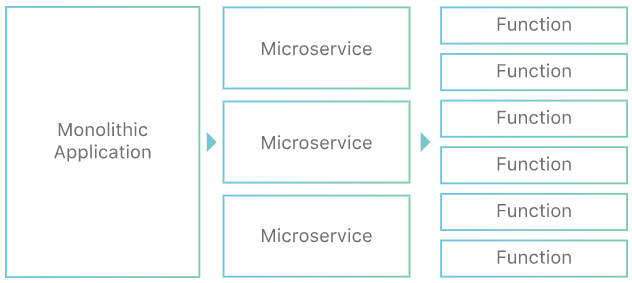Function-as-a-Service (FaaS) is a serverless backend service that allows developers to build modular code that may be performed in response to specific events on the fly.

Learning Objectives
You will be able to do the following after reading this article:
- Define the term FaaS.
- Examine the benefits and drawbacks of FaaS.
- Explain why a big edge network is critical to the performance of a FaaS application.
What is Function-as-a-Service?
FaaS (Function-as-a-Service) is a serverless method of executing modular programmes at the edge. FaaS allows developers to write and update code on the fly, which can then be run in response to an event like a user clicking on a web application element. This makes scaling code simple and is a cost-effective method of implementing microservices.
What are microservices?
If a web application were a work of art, employing microservice architecture would be like creating the work of art out of a mosaic tile collection. One tile at a time, the artist may effortlessly add, change, and repair. Monolithic architecture is equivalent to painting the entire item on a single canvas.

Microservice architecture is a method of creating an application from a collection of modular components. Developers like the idea of breaking down an application into microservices because it allows them to build and change tiny bits of code that can be quickly integrated into their codebases. This differs from monolithic architecture, which combines all of the code into a single big system. Even modest modifications to an application in a big monolithic system necessitate a lengthy deployment procedure. This deployment complication is eliminated with FaaS.
Web developers may focus on creating application code while the serverless provider handles server allocation and backend services with serverless code like FaaS.
What are the advantages of using FaaS?
Improved developer velocity
FaaS allows developers to focus on creating application logic rather than worrying about servers and deployments. This usually translates to a considerably shorter development timeframe.
Scalability is built-in.
Developers don’t have to worry about developing contingencies for high traffic or heavy use because FaaS programming is naturally scalable. All scaling issues will be handled by the serverless provider.
Efficiency in terms of costs
Serverless FaaS companies, unlike typical cloud providers, do not charge their customers for idle computing time. As a result, clients simply pay for the amount of computing time they utilise, rather than wasting money on over-provisioning cloud resources.
What are the drawbacks of FaaS?
There is less system control.
Having a third party control part of the infrastructure makes it difficult to comprehend the entire system and complicates troubleshooting.
For testing, more complexity is necessary.
Integrating FaaS code into a local testing environment can be challenging, making full testing of an application more complex.
How to get started with FaaS
In order to enable FaaS capabilities for a web application, developers must first establish a connection with a serverless provider. Because FaaS integration requires certain application code to be supplied from the edge, edge server availability and geographical dispersion are critical considerations. A user in Italy visiting a site using FaaS edge code served from an overburdened data centre in Brazil will experience the type of lag that causes significant bounce rates. Different Cloud company Workers are popular FaaS solution that takes use of worldwide network, which includes data centres in over 200 cities.
RELATED CONTENT
- What Is the Cloud?
- What Is Hybrid Cloud?
- What is Cloud Migration?
- What Is a Cloud Firewall?
- What Is Multicloud?
- What is SaaS (Software-as-a-Service)?
- What is PaaS (Platform-as-a-Service)?
- Serverless Computing vs. Containers | How to Make a Decision






